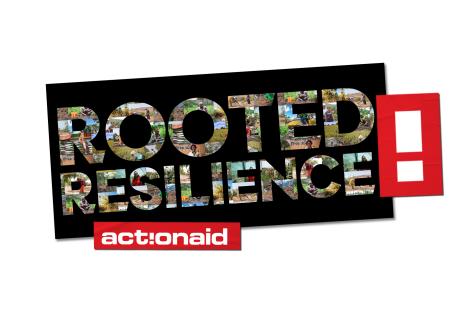Rooted Resilience: a year of stories.

Farmers rely on traditional knowledge, and use the nutrients found in natural local materials. They work with the natural behaviour of plants, birds, insects, and beneficial microbes as well as a huge diversity of crops, seed varieties, and livestock bred and adapted to many different purposes.
Millions of farmers are now finding that their soils have improved water-carrying capacity and fertility, making them resilient to the escalating effects of climate change without compromising yields. Agroecological approaches mean that farmers are more likely to gain a harvest in spite of erratic and changing weather patterns such as failed rains, flooding, and pest attacks.
Agroecology gives power to farmers.
Part of Rooted Resilience’s mission is to not only give a platform to agroecology and its life-changing benefits, but to also tell stories through the lens of those who understand the situation best.
The first collection of stories is from The Gambia. Mohamed Lamin Touray, Communications Coordinator at ActionAid The Gambia, captured this beautiful content, and he gave an interview explaining his work:
Why is it so important to tell these stories?
The impact of climate change can be seen clearly in rural Gambia. There is rampant felling that has affected the rainfall pattern. Sometimes the rains are erratic, and other times there are flash floods causing serious erosion of farmlands. Apart from that, women’s access to farmland is a challenge in many areas despite the crucial role they play in food production in The Gambia. About 70% of the food grown in The Gambia is cultivated by women. So, through ActionAid’s training on climate resilient sustainable agriculture, farmers, especially women farmers, adopt new practices where they cultivate early maturing crop varieties and practice mixed cropping. There cannot be food security in The Gambia without women accessing farmland and women’s permanent ownership of land.
What was it like meeting these women and working with them on their stories?
Interesting! I already knew some of them. However, I was shocked to learn that in most places especially in the North Bank Region, women are still grappling with access to land. It was an emotional moment when Mala Jallow from North Bank Region narrated her story explaining how the rice field she cultivated on was taken away from her, and her only crime was getting a good harvest. The women opened up during my interview with them.
How does ActionAid support the women involved?
ActionAid has been supporting them with climate-related farming training, focused on land rights empowerment. In addition, the women have been supported with farm implements, viable seeds, and farm animals such as donkeys to facilitate their farming. Some of them even received cash support from ActionAid.
Can you talk us through what happened when you were out gathering this content?
It was a great experience but it took me a whole day to interview two people because the villages are far from each other. Sometimes their homes are far away from their farms. So, I had to pick them up in an ActionAid vehicle and take them to their farms to do some weeding in order to take their photos. Sometimes I was lucky to find them on their farms if they had started harvesting and it was easier to observe them and take some photos.
What is your favourite thing about photography and storytelling?
I love the exposure to different communities, meeting different people, and learning about different cultures. Apart from the new knowledge I gain, I’m also able to see first-hand what farmers experience in their regions.
What would be the story you want to tell most?
The story of women cultivating most of the food that we consume yet being denied access to those lands they cultivate to feed their families, neighbours, communities, and the country as a whole.
What has been the most rewarding or interesting story you have told?
Well, the most amazing and unforgettable story was that of Aja Fulo Drammeh, a woman from the Upper River Region of The Gambia. She was leading a group of over 400 women farmers who were cultivating a lot of rice in the region. They cleared a vast area of farmland to do their farming activities. But the Alkalo (Village head) forcibly took away the land from them. When I asked the Alkalo why the land was taken, his brother quickly intervened and said: “The woman wanted to challenge us (meaning their authority as custodians of the village).” A petition was collected and put before the National Assembly and the land was given back to the women. But unfortunately, after the change of government in 2017, the Alkalo took back the land, and the women were left in a dilemma. I went back to Aja Fulo but she was too scared to grant me another interview. She has completely lost hope. Her son bought her a piece of land to farm on but what is the plight of other women who could not get their own land?
What is the future of storytelling?
I think storytelling is key in ActionAid’s work. It is through telling the stories as they are that we can make an impact and change lives. We should look more at how our interventions are changing lives. For example, while in Senegal last year, I saw in one of the LRPs women burning dry grass and turning it into charcoal to earn some income. It was very impressive. Such activities can be replicated in other countries. I also thought to myself that could be another way of reducing bushfires, and reducing cutting down of trees which is also contributing to climate change. Such stories are lif